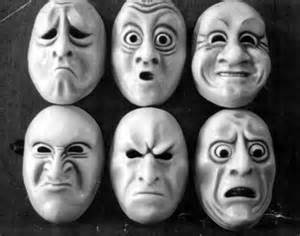Learning to Become an Excellent Communicator – Self-Expression as Performance
Developing skill in becoming an excellent communicator is probably the most valuable skill there is in terms of transforming every area of your life. All creation and transformation occurs fundamentally through words and dialogue, which start off as our thoughts and become what we speak and talk about with others. The most basic form of self-expression comes through our ability to articulate our thoughts and ideas in a way that causes the other person to form the same ideas in their imagination. How we communicate, both to ourselves and others, forms the very basis for all our relationships and what we create as an experience. It’s how we bring an idea in a purely mental form into expression to form a correlating outer experience of the same nature. Very few skills are more powerful than your ability to communicate in an effective and meaningful way, and unite the people around you towards a common goal. All communication, in the most basic sense, comes as a full body expression, rather than simply through the words we speak as a way of trying to get our thoughts and ideas across to others.
Many of you may have seen the diagram of the “communication pie” which reveals the components of communication as being 7% based on the words being used, 38% being the tone or quality of your voice in terms of how we say it, and 55% of the communication comes through our physiology as what we’re expressing by how we’re being. Naturally, many of the experts want to take this in a literal manner and begin breaking apart a whole expression into body-language as categories and labels in a way that can be standardized and therefore taught in a methodical manner, yet, what this is actually showing us is that we actually communicate by expressing with our whole being. Communication is a full body transmission that simultaneously reveals the inner state of the person communicating, while also revealing their mental paradigm that forms their unique perception and interpretive style. What this shows us is that we can never really hide how we’re feeling. Our attitude forms the greater part of our communication. What we value, believe, and have a preference for shapes our communication in subtle ways that while they may not be readily recognized in our attempt to conceal them, they are still fully conveyed in our energy, which is felt by others.

Communication is intuitive and being done all the time through our presence, regardless of whether or not we’re talking. People can sense our energy as our mental atmosphere, read our emotions being reflected in our body postures, gestures, and facial expressions, as well as biological processes such as flushing of the skin, tension in the lips, dilated pupils, shakiness in our voice, and so on. We also communicate in a basic sense by how we present ourselves, through our personal grooming, style, wardrobe, jewelry, etc. We create an image of ourselves that give people an impression of who and how we are, and what kind of person we are. To take up the study of body language that turns it into a mechanical, systematized process of categorizing and labeling specific postures and gestures as meaning this or that and applied to everyone equally, is like buying a book on dream interpretation that gives a universal interpretation of certain objects as if they mean the same thing to everybody, when in fact, nothing could be further from the truth. The message in the communication expresses not only the idea being communicated, but also the person doing the communicating. We can tell how they feel about what they’re communicating, what their perspective is, and whether they’re being congruent in terms of what they’re communicating being contradictory to how they actually feel. Whether they’re creating an illusion and lying, or whether or not they believe what they’re saying, and saying it out of honesty. What we’re doing with our body always matches our internal state. Always.
This gives us the tools we need for becoming excellent communicators by becoming aware of how we’re being as we communicate. By realizing that in order to communicate effectively, we have to first form the proper state or mood out of which we communicate, knowing it’s going to be the greater part of the communication. Cultivating the proper attitude through which we communicate is critical to the message or idea being communicated. Becoming aware of how we accentuate our voice quality through our tone, speed and hesitations as a form of timing, the rhythm of talking, what and how we emphasize words, what we’re doing with our body, our facial expressions, and gestures by how we use our hands, controlling the look in our eyes, and so on.
The basic dynamic always going on as the basis for our communication, is that whatever mood or emotion we’re embodying and expressing through, we stimulate that same emotion in others, calling it forth in response to us as the connection or stream of communication as an interactive flow of energy. We connect to others and the external world through feelings and emotions. Emotions connect us to things outside of ourselves that brings what’s inside, outside, and vice verse as a correspondence. Our action stimulates an equal reaction of the same emotional quality. How we act towards others by how we’re being, determines how they act towards us in a natural response to us. This is a fundamental form of cause and effect.
So all communication is in fact a performance where the words being employed are only a minute part of what’s actually being conveyed. To become an excellent communicator, you need to become an excellent performer. You take an attitude of expressing ideas by embodying them, creating the proper mood necessary for stimulating the same feeling-mood in whomever you’re communicating with. You do this by asking yourself, what feeling is necessary for the expression of this idea within the conditions and circumstances it’s being used to create? What is the purpose of the communication, and what effect or behavior is it designed to create? What emotion will give the proper emphasis and elicit the desired response as an outcome? Based on what you’re communicating and what result or course of action it’s meant to set in motion, what state do you need to cultivate in order to become the proper channel for expressing the idea that will elicit the same state in another? What part of the persons imagination do you want to touch on through the nature of the communication, and what seed will the communication plant as a fertile idea in their mind that they will continue to grow through the emotion connected to it that it was delivered through, long after the communication is done?
To plant a seed as a thought to be grown in the mind of another, we match the idea with the emotion. The emotion determines in what way the idea will be developed, and what kind of reality they will create out of it as a result. When inspiring and passionate emotions are coupled with an idea, it’s developed in a very positive way as the means for expressing the emotion through the idea. When negative emotions are applied to the same idea, it’s developed in a way that expresses that emotion and serves to create more of it. Thought and emotion are always joined to create experiences as the reality of the thought. The emotion is our direct line into another and the formative or creative factor that shapes the idea to be an expression of it. While our thoughts may be unique to each person, and the words we use form different pictures in each persons mind as an association, emotions are universal and shared by everyone in a congruent manner. Anger produces anger, and though how it’s expressed may be different from person to person, it still acts to stimulate and create more anger. The emotional component of an idea is what we connect to in others, and the idea as a thought is simply the form the emotion takes on as a vehicle to express as a reality. Whenever we’re communicating, the emotion is what’s actually being communicated through how we’re expressing ourselves. Our expression stimulates that same nature and expression in another and acts to multiply it.
By learning to view how we communicate in a new light, we can not only become more self-aware, and perhaps realize why our communications fail to produce what we want them to produce, but through the awareness alone, we can hone our style for self-expression by learning how to perform much like an actor takes on the proper state and character traits to play a role in a convincing manner. Just as when we were kids and we modeled our heroes and those we wanted to be like by taking on the same qualities and behaviors that served to develop us in those same ways by becoming the expression of them. When we learn how to communicate by performing, we develop higher forms of self-expression and become powerful creators in our own life. We learn how to give people ideas that we want them to develop and act to co-create with us by forming a joint reality out of them.
So as you think about communicating and what it is you wish to produce by way of the communication, think about what feeling or emotion as a state-of-mind that you want to elicit in them as the fertile ground for developing the idea you’re introducing into their mind as a thought that will be developed in their imagination into an internal experience. Then intentionally cultivate and take on that emotional state before you communicate the idea. Notice just how employing the emotional state changes how you form the communication in your imagination that changes how it delivered or expressed. Then, practice communicating in a way that consciously expresses the emotion by how you’re being. By your energy, your body posturing, facial expression, the tone and quality of your voice, and the rhythm in which you speak, and what you emphasize by how you say it. Communication is actually an art-form that’s performed. Like any performance based art, you have to practice to develop your style and your ability to become more expressive by learning to utilize your entire being as the basis for the communication.
To produce new behaviors takes the firm decision to do so, and commitment to a dedicated practice that’s undertaken in a devoted manner. Once we choose what we want to change and the new methods to be employed in their place, and we start by imagining our selves being that way, and doing it that way, we begin using the creative aspect of our imagination to form internal representations of an idea as a reality, that we then use for acting out to produce the same idea as an outer affect. Imagining an idea gives us the basis for practicing it. By practicing we build knowledge into our muscle where it becomes natural and automatic. We begin transforming how we’re being in the world, and how we express ourselves as a result. We learn how to truly connect to others and share ideas that simultaneously allow for emotional expression that’s healthy and productive in nature. By expanding our ability to express ourselves more fluently and eloquently, we form a new kind of confidence and enhance our experience of living by enriching the meaning things take on.
Practice only makes perfect when you know how to practice in the right way. Otherwise, it simply propagates a whole series of errors.
Transpersonal Psychologist, Personal Transformation Coach, and Spiritual Teacher






